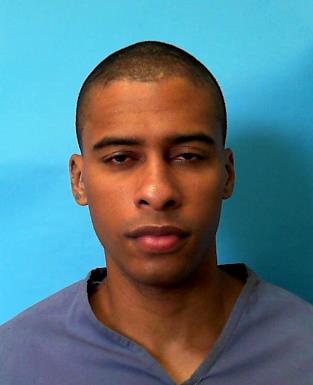Please E-mail suggested additions, comments and/or corrections to Kent@MoreLaw.Com.
Help support the publication of case reports on MoreLaw
Date: 04-09-2018
Case Style:
Dylan Robinson vs State of Florida

|
Case Number: 16-3126
Judge: Allen Winsor.
Court: FIRST DISTRICT COURT OF APPEAL STATE OF FLORIDA
Plaintiff's Attorney: Pamela Jo Bondi, Attorney General, and Sharon Traxler, Assistant Attorney General
Defendant's Attorney: Cromey Law, P.A.,
Description: In the fall of 2014, a University of West Florida sophomore invited Robinson up to her dorm room. The young woman had met Robinson the day before, and Robinson asked if he could visit her while he was on campus. Inside her dorm room, the two talked for a while before eventually kissing. The young woman was okay with kissing, but Robinson did not stop there. He soon became more aggressive, closed the door, and turned off the lights. He picked up the young woman, put her on her bed, and held her down. He
2
grabbed her neck, pulled down her pants, and forced himself on her. When it was over, Robinson changed his shirt and left the dorm. The young woman called her friends, who called the police. She then went to the hospital, where a nurse examined her and found internal tearing, blood, and a neck bruise in the shape of a hand. Her underwear, soaked with blood, was collected for DNA testing. The State charged Robinson with three counts of sexual battery with force likely to cause serious personal injury, based on three separate acts. Robinson testified at trial, admitting to sex but claiming it was consensual. The young woman testified too, and she said it was not consensual; she said Robinson had raped her. The jury believed the young woman and convicted Robinson on two of the three counts. Robinson was sentenced to concurrent terms of twenty-five years’ imprisonment. He now appeals, raising three issues. Robinson’s first argument on appeal is that the trial court erred by excluding evidence of third-party DNA found in the young woman’s underwear. Although Florida’s Rape Shield law generally precludes this type of evidence to show consent, § 794.022(2), Fla. Stat. (2014), Robinson maintains the evidence was relevant to show someone else caused her injuries, see McGriff v. State, 601 So. 2d 1320, 1321 (Fla. 2d DCA 1992) (“Evidence of a victim’s prior sexual encounters with others is admissible . . . to show that the defendant was not the source of the victim’s injury.”). But this argument was never made below, even after the State sought to exclude evidence of the young woman’s sexual history through a motion in limine—a motion the court granted without objection. Therefore, this argument was not preserved for our review. See Steinhorst v. State, 412 So. 2d 332, 338 (Fla. 1982). Robinson next argues that the trial court erred by allowing a nurse to offer certain expert testimony. The nurse had performed the young woman’s sexual-assault examination after the incident, and counsel asked her whether the young woman’s injuries were “what you might see after forced sexual intercourse or sexual battery.” The nurse answered affirmatively, Robinson objected that the nurse had not been qualified as an expert, and after voir
3
dire, the court allowed the testimony. Robinson maintains the nurse was not qualified to answer. We review only for an abuse of discretion, see Penalver v. State, 926 So. 2d 1118, 1134 (Fla. 2006), and we find none. On voir dire, the nurse testified about her training and education, that she was board certified as a sexual assault nurse examiner, and that she performed more than thirty similar exams throughout her training and practice. Given these facts, the court acted within its discretion in allowing the testimony. And at any rate, the nurse acknowledged on cross that the injuries were also consistent with injuries she might expect to see from consensual sex. Therefore, even if there were error in admitting the testimony, we would find it harmless beyond reasonable doubt. Finally, Robinson contends the trial court should have granted his motion for judgment of acquittal, an issue we review de novo. Huggins v. State, 135 So. 3d 306, 308 (Fla. 1st DCA 2012). The State asked the jury to convict Robinson of sexual battery with force likely to cause serious personal injury, but the verdict form also included the lesser included offense of sexual battery. The jury chose the greater offense, but Robinson argues the State presented insufficient evidence that he used force likely to cause “serious personal injury,” a term defined to include “great bodily harm or pain.” § 794.011(1)(g), Fla. Stat. (2014). In other words, Robinson contends the greatest offense for which he could be convicted was sexual battery. Viewing the evidence in a light most favorable to the State—as we must, Ibeagwa v. State, 141 So. 3d 246, 246–47 (Fla. 1st DCA 2014)—we conclude there was sufficient evidence to support the jury’s verdict. The young woman testified that Robinson held her down by her neck, bit her, made her bleed, and caused her great pain. The young woman’s medical records, entered into evidence, detailed a half-centimeter vaginal tear, significant bruising and discoloration on her neck, and bleeding following the attack. Other witnesses testified to seeing significant amounts of blood on the young woman’s bed sheets, and Robinson himself testified that he changed shirts afterward because the shirt he wore during the encounter was covered in blood. This evidence—and all the inferences drawn from it—were sufficient to allow a reasonable jury to conclude that Robinson used force sufficient to cause “great bodily harm or pain.”
Outcome: AFFIRMED
Plaintiff's Experts:
Defendant's Experts:
Comments: